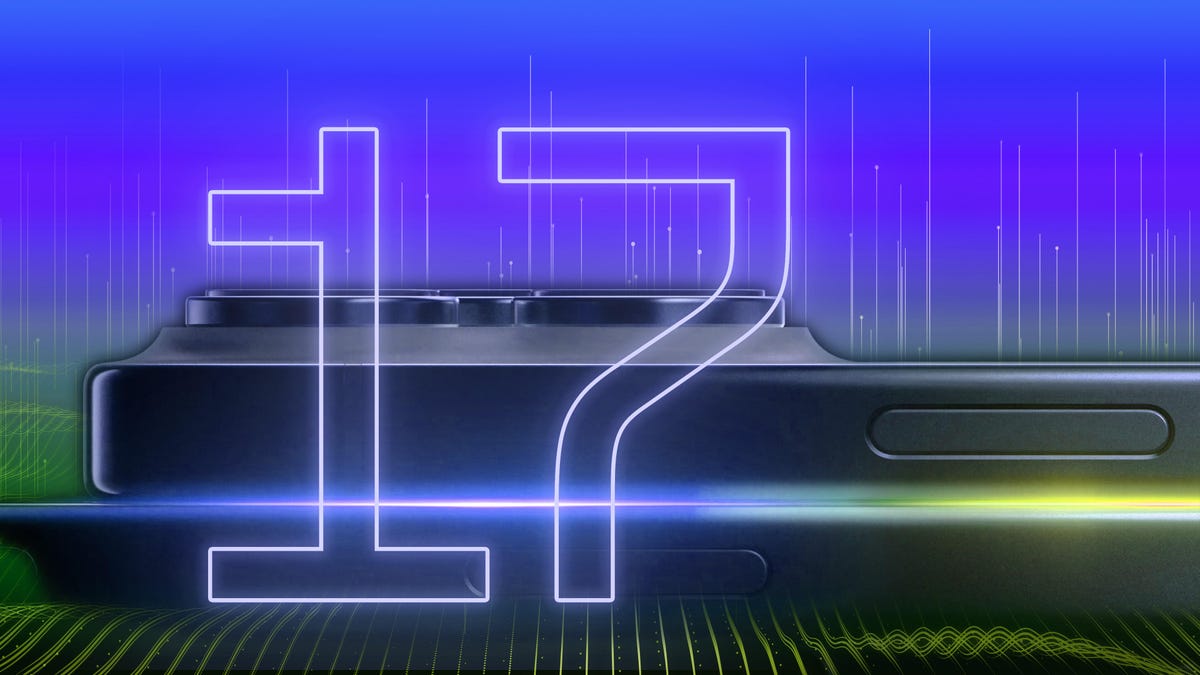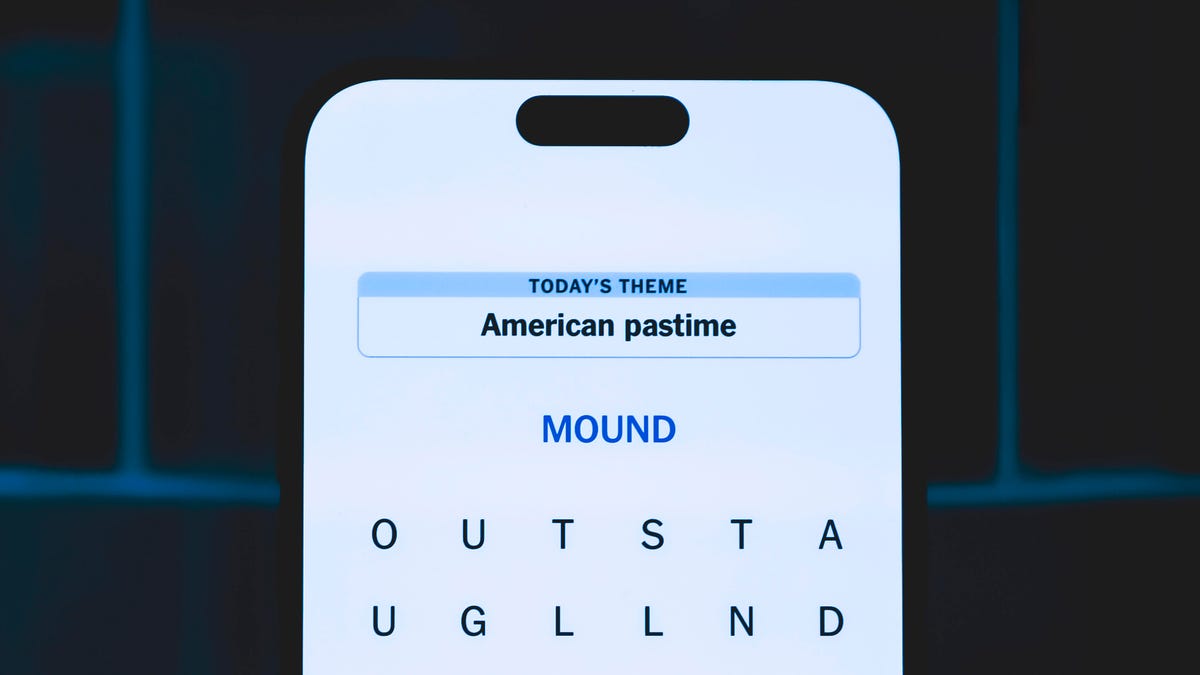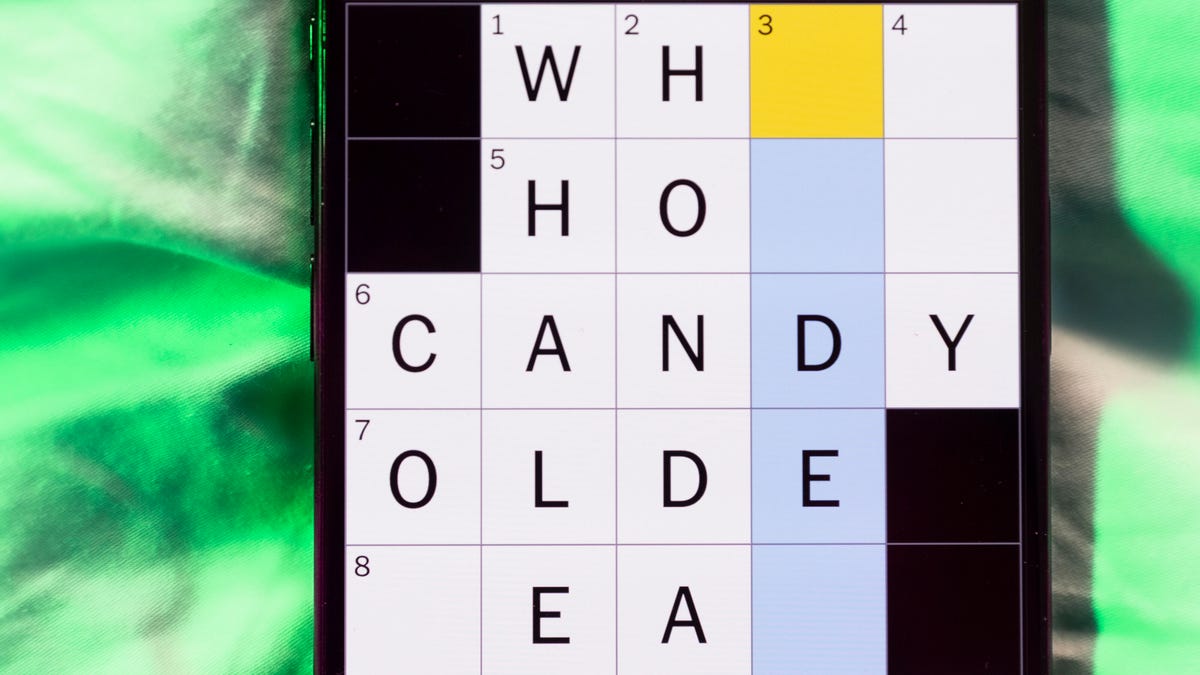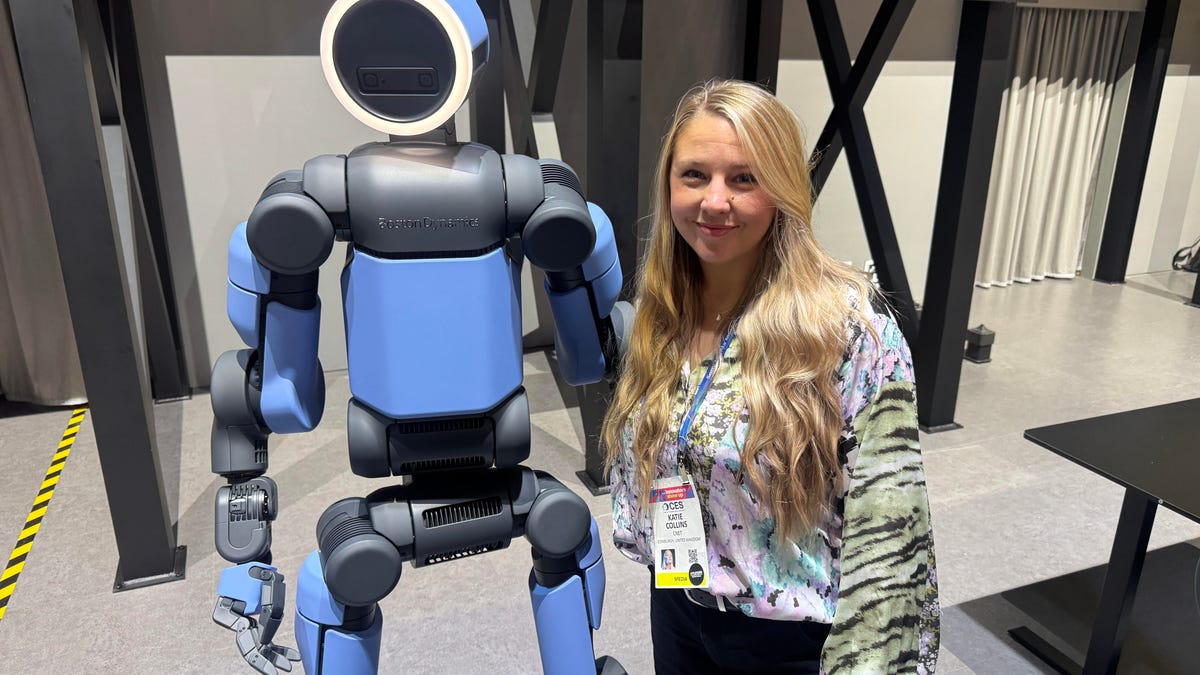Technologies
iPhone 17 Rumors: Everything to Know About Apple’s Upcoming Flagship
The new phone could feature a redesigned camera bump and a higher refresh rate — and maybe a higher price.

Key takeaways:
- The iPhone 17 could feature a redesigned camera bump, though it may not be as drastic a difference as the Pro models.
- A higher refresh rate could be coming to the full lineup, potentially enabling the baseline iPhone to have an always-on display.
- Prices remain uncertain with tariffs, but they’ll likely go up, given it’s been years since Apple raised the price of the iPhone.
The anticipated reveal of Apple’s newest iPhone is just around the corner. For months now, rumors have been swirling about what the upcoming device, likely called the iPhone 17, could look like, from a redesigned camera module to fresh colors and a higher refresh rate. The phone is expected to debut in early September, although Apple hasn’t confirmed anything yet. You can also check out our rumors on the iPhone 17 Pro and the thinner iPhone 17 Air.
Perhaps the biggest looming question is whether iPhones could get pricier, especially with tariffs. President Donald Trump has said Apple will have to pay a 25% tariff on iPhones made outside the US. This would almost certainly lead to a price hike for consumers. We’ll have to wait to see how Apple responds and if shoppers really do end up shouldering that extra cost. But even without tariffs, the iPhone may be due for a markup, as it’s been years since Apple raised prices on its handsets.
Here’s everything analysts and leakers predict about the baseline iPhone 17.
See also: Thinking About Buying a New iPhone? Here’s Why You Should Wait
Camera bump redesign
It’s not an iPhone release without a camera upgrade, and there have been plenty of rumors about what the camera module could look like on Apple’s upcoming phones. In January, a leaked image from Majin Bu on X suggested the phone could feature a pill-shaped camera bar, essentially resembling what you’d find on Google’s Pixel 9 phone. In February, Bu followed up with CAD renders of what’s said to be the iPhone 17 lineup, featuring horizontal camera bars, as well as larger rectangular bars on the iPhone 17 Pro models.
iPhone 17 Lineup CAD pic.twitter.com/xednTkpJnq
— Majin Bu (@MajinBuOfficial) February 23, 2025
In April, Bloomberg reported the «iPhone 17 Pro will look a lot more like the 16 Pro than anticipated,» adding, «From the front, the 17 Pro will appear quite similar to the 16 Pro. It’s the back camera that will look meaningfully different.» The latest rumors suggest the iPhone 17 Pro’s three-lens camera arrangement will be maintained but will sit on a new panel that stretches across the phone’s width and is the same color as the rest of the phone.
Later in April, Bu again posted an image of the purported iPhone 17 lineup, showing those wider camera bars with the stacked lenses still configured to the left.
iPhone 17 Lineup pic.twitter.com/oUEEH9bJn5
— Majin Bu (@MajinBuOfficial) April 22, 2025
Not until next year, for the 20th anniversary of the iPhone, will Apple be «preparing a major shake-up» for the phone’s design, Bloomberg says. That includes a (long-rumored) foldable version and a «bold new Pro model that makes more extensive use of glass.»
Another camera-related rumor is that the selfie camera on all iPhone 17 models will be upgraded to 24 megapixels, according to analyst Jeff Pu. That’s a decent bump from the current 12-megapixel front-facing camera on the iPhone 16 lineup, although it’s important to remember that more megapixels don’t automatically mean better photos. Still, given how much people increasingly rely on their front cameras to snap selfies and record videos for TikTok and Instagram, this surely will be a welcome advancement.
iPhone 17 display upgrade
Rumor has it that all models of the iPhone 17 will feature a 120Hz display, bumping the non-Pro models up from their current 60Hz refresh rate. That could be a welcome change, as the discrepancy between the Pro and non-Pro refresh rate is surprising; when Apple debuted the iPhone 16 and 16 Plus with a 60Hz display, there was a bit of an outcry from folks who expected more in 2024. This rumored update could remedy that — and possibly bring the always-on display to the baseline model.
There’s been a lot of back-and-forth about whether the latest iPhones will have a scratch-resistant, anti-reflective display. A July report from MacRumors suggests that feature will in fact be arriving on the iPhone 17 Pro and Pro Max, just not the baseline iPhone 17 or the Air. This would make the Pro models the first iPhones with an anti-reflective screen, giving them a feature that CNET’s Patrick Holland deemed one of the best attributes of the Samsung Galaxy S25 Ultra.
There also have been contradictory reports on whether the Dynamic Island on the iPhone 17 lineup will look any different. In May, Pu said all iPhone 17 models will use a new metalens technology for the proximity sensor, which could allow Apple to reduce the size of the Face ID sensor and the Dynamic Island, according to 9to5Mac. Analyst Ming-Chi Kuo, on the other hand, said in January that the Dynamic Island would remain «largely unchanged» in the iPhone 17 lineup compared to the iPhone 16. We’ll have to see what ends up being true.
Rumors on what frames the iPhone 17 lineup will feature have gone back and forth. In February, Pu suggested the iPhone 17, iPhone 17 Pro and iPhone 17 Pro Max will all have aluminum frames. He noted that the iPhone 17 Air could be the outlier with a titanium frame.
New chipset
In May, Pu noted the iPhone 17 would have the same A18 chip used in the iPhone 16, while the iPhone 17 Air and Pro models will feature an A19 chip. It’s possible the phones could also include the Apple-developed 5G modem, called the C1 chip, which debuted on the iPhone 16E.
In February, Kuo noted Apple will swap out Broadcom’s Wi-Fi chips for in-house chips across the iPhone 17 lineup, stating this would «enhance connectivity across Apple devices.» It’s not yet clear what exactly this would mean, but it would be interesting if Apple’s C1 chip was also accompanied by its own Wi-Fi chip.
iPhone 17 battery
So far, rumors suggest only the pricer iPhone 17 Pro Max could get a bigger battery, according to Ice Universe. The leaker says the top-of-the-line phone could go from 8.25mm on the iPhone 16 Pro Max to 8.725mm on the iPhone 17 Pro Max as a result. In addition, leaker Instant Digital suggests the high-end phone could have about a 5,000 mAh battery, a notable increase over the 4,685 mAh on the iPhone 16 Pro Max, according to third-party tests.
But that doesn’t mean the baseline version won’t get any boost. Even if battery capacity stays the same (which it may not), the AI-powered Adaptive Power feature arriving with iOS 26 can help extend battery life. The feature automatically adjusts your iPhone’s performance based on how you’re using it at the moment, according to Apple. This could especially be helpful with the slimmer iPhone 17 Air, which will likely also have a thinner battery.
iOS 26 brings a fresh look
Apple has revamped its mobile operating system with iOS 26 (not iOS 19), which is named after the last two digits of the upcoming year. And with iPadOS, MacOS, WatchOS, TVOS and VisionOS following the same naming convention, the move is designed to bring more uniformity — naming-wise and appearance-wise — across the operating systems.
The new Liquid Glass interface brings a more transparent, lens-like look to the iPhone and other Apple devices. With iOS 26, the Camera app also adopts a more minimalistic design and Photos once again makes it easier to find your albums by adding separate tabs for your Library and Collections, instead of forcing you to scroll through a single cluttered screen. Updates to Messages include being able to add backgrounds to chat windows and create polls in group chats, and a new screening tool can better detect spam texts and move messages from unknown senders to a dedicated folder. You can read more about iOS 26 features here.
In April, tipster Digital Chat Station noted that given the use of Apple Intelligence and AI on a «large scale,» the iPhone 17 lineup will come with 12GB of RAM, instead of the current 8GB. Kuo noted the iPhone 17 Air and Pro models would sport that increased 12GB of RAM, but that Apple was still deciding whether to equip the baseline model with 8GB or 12GB of RAM. In May, Pu noted the baseline would remain at 8GB.
Price and release date
We expect the iPhone 17 to become available in September although it’s not yet clear exactly when, as Apple hasn’t confirmed anything.
Historically, Apple has unveiled its new iPhones on the first Tuesday of September after Labor Day. However, the first Tuesday in 2025 is the day after Labor Day so it’s possible Apple could either push its iPhone event to Wednesday, Sept. 3, or hold it the following week on Tuesday, Sept. 9.
That would mean the phones could then become available on either Sept. 12 or 19. Preorders would kick off a week before general availability, on either Sept. 5 or 12.
Bloomberg’s Mark Gurman has said that the new iPhone announcement should come Sept. 9 or 10.
Price is also a big unknown. Jefferies analyst Edison Lee has said the iPhone 17 Air, 17 Pro and 17 Pro Max will get a $50 price increase to offset tariffs and the higher cost of components, but didn’t mention the baseline iPhone 17. If that’s true, the starting prices for the full lineup could be:
- iPhone 17: $829
- iPhone 17 Air: $979
- iPhone 17 Pro: $1,049
- iPhone 17 Pro Max: $1,249
Regardless of higher component costs or tariffs, the iPhone is overdue for a price increase, because the last price hike was five years ago.
The latest rumors suggest the iPhone 17 could be available in black, blue, silver, purple and green.
iPhone 17 Pro New Colors Revealed
Full Article:https://t.co/3knFKWBdB7 pic.twitter.com/tGoZABVTGP— Majin Bu (@MajinBuOfficial) July 17, 2025
We’ll continue to update this piece as more rumors surface so be sure to follow along.
Technologies
Today’s NYT Strands Hints, Answers and Help for Jan. 9 #677
Here are hints and answers for the NYT Strands puzzle for Jan. 9, No. 677.

Looking for the most recent Strands answer? Click here for our daily Strands hints, as well as our daily answers and hints for The New York Times Mini Crossword, Wordle, Connections and Connections: Sports Edition puzzles.
Today’s NYT Strands puzzle is a fun topic — but one of the answers describes something I’ve never heard of before. Also, some of the answers are difficult to unscramble, so if you need hints and answers, read on.
I go into depth about the rules for Strands in this story.
If you’re looking for today’s Wordle, Connections and Mini Crossword answers, you can visit CNET’s NYT puzzle hints page.
Read more: NYT Connections Turns 1: These Are the 5 Toughest Puzzles So Far
Hint for today’s Strands puzzle
Today’s Strands theme is: For cubs fans.
If that doesn’t help you, here’s a clue: Like Gentle Ben.
Clue words to unlock in-game hints
Your goal is to find hidden words that fit the puzzle’s theme. If you’re stuck, find any words you can. Every time you find three words of four letters or more, Strands will reveal one of the theme words. These are the words I used to get those hints but any words of four or more letters that you find will work:
- LAIR, RAIL, CROP, LAID, BALD, DEAN, BROW, DIZZY
Answers for today’s Strands puzzle
These are the answers that tie into the theme. The goal of the puzzle is to find them all, including the spangram, a theme word that reaches from one side of the puzzle to the other. When you have all of them (I originally thought there were always eight but learned that the number can vary), every letter on the board will be used. Here are the nonspangram answers:
- BLACK, BROWN, GRIZZLY, PANDA, POLAR, SPECTACLED (That last one is the one I’ve never heard of! But it’s real!)
Today’s Strands spangram
Today’s Strands spangram is BEARSINMIND. To find it, start with the B that’s five rows to the right and three letters down, then wind up, over and down the whole far-right row.
Don’t miss any of our unbiased tech content and lab-based reviews. Add CNET as a preferred Google source.
Toughest Strands puzzles
Here are some of the Strands topics I’ve found to be the toughest.
#1: Dated slang. Maybe you didn’t even use this lingo when it was cool. Toughest word: PHAT.
#2: Thar she blows! I guess marine biologists might ace this one. Toughest word: BALEEN or RIGHT.
#3: Off the hook. Again, it helps to know a lot about sea creatures. Sorry, Charlie. Toughest word: BIGEYE or SKIPJACK.
Technologies
Today’s NYT Mini Crossword Answers for Friday, Jan. 9
Here are the answers for The New York Times Mini Crossword for Jan. 9.

Looking for the most recent Mini Crossword answer? Click here for today’s Mini Crossword hints, as well as our daily answers and hints for The New York Times Wordle, Strands, Connections and Connections: Sports Edition puzzles.
Need some help with today’s Mini Crossword? The Across clues were kind of tough today. Read on for all the answers. And if you could use some hints and guidance for daily solving, check out our Mini Crossword tips.
If you’re looking for today’s Wordle, Connections, Connections: Sports Edition and Strands answers, you can visit CNET’s NYT puzzle hints page.
Read more: Tips and Tricks for Solving The New York Times Mini Crossword
Let’s get to those Mini Crossword clues and answers.
Mini across clues and answers
1A clue: Question in a late-night text
Answer: YOUUP
6A clue: Plentiful
Answer: AMPLE
7A clue: Saint ___ and Nevis (Caribbean nation)
Answer: KITTS
8A clue: Baby-bringing bird
Answer: STORK
9A clue: Take care of the tab
Answer: PAY
Mini down clues and answers
1D clue: Himalayan herbivores
Answer: YAKS
2D clue: Fail to include
Answer: OMIT
3D clue: «High five!»
Answer: UPTOP
4D clue: The «U» of UV rays
Answer: ULTRA
5D clue: Annoying to deal with
Answer: PESKY
Don’t miss any of our unbiased tech content and lab-based reviews. Add CNET as a preferred Google source.
Technologies
I Got Up Close and Personal With Boston Dynamics’ New Atlas Robot
Before Atlas takes its first steps into the world of work later this year, I found myself face-to-face with CES 2026’s most talked-about robot on the show floor.

When I say that I went hands-on with the new Boston Dynamics Atlas robot, I mean that I actually held hands with it. This humanoid robot, which CNET just awarded the Best Robot of CES Award, is one of the most advanced in the world, and I couldn’t pass up the opportunity to get up close and personal with it.
This product version of the robot, which is set to be shipped to Hyundai factories imminently to start working, has been the talk of CES this year. The specific Atlas robot I encountered was a static model that wasn’t turned on or fully operational. Our interactions were, therefore, sadly one-sided. Still, I ran my hands over its soft-touch plastic shell and gently prodded at its finger joints, wondering how it would feel if they gripped me back.
People tend to have varying feelings about humanoid robots — understandable given that they are built to some degree in our image, while also usually being stronger than us, with «brains» that we don’t fully understand. Atlas definitely evokes contradictory emotions for me — even more so when I stood face-to-face with it.
I’m in awe of the engineering, a little fearful of its capabilities, hesitant about what it could mean for the future of humanity and charmed by its design and styling. The periwinkle blue iteration of Atlas that I met on the show floor at CES 2026 almost bears more resemblance to a Dyson product than it does the industrial robots that defined Boston Dynamics’ early days, when it was best known for its work with DARPA.
«There’s a lot of really specific things about this robot that probably look a little weird,» said Zachary Jackowski, Boston Dynamics VP and general manager of Atlas. He pointed to the legs, which he described as «like nothing anyone else was doing.»
Atlas’ thighs are narrow set and in line with the torso, while the calves are wider set, attached to their upper counterparts with a circular joint. This robot is, in fact, all subtle curves and soft lines. There are no harsh edges or stark angles.
During a year when CES has been flooded with humanoid robots, Atlas definitely does stand out due to its design. It appears both less classically human and less industrial than some of its peers, while also lacking the often intimidating, featureless faces they tend to exhibit. Instead, it has two low-set cameras resembling eyes placed where you’d usually expect a mouth to be. Its face is a perfect flat circle, defined by an LED halo that gives it a somewhat Pixar lamp effect.
I asked Jackowski why Boston Dynamics decided to skew so relatively unhuman with this version of its humanoid. «Well, it’s not a human,» he said. «It projects the wrong first impression about a robot to have it pretend to be something that it’s not.»
Particularly in the early days of humanoids, he added, robots won’t have anything like human-like intelligence. People should look at it and see it for what it is — a tool for performing tasks safely and efficiently.
In fact, most of the design decisions were made to keep Atlas as simple, scalable and safe as possible, Jackowski said. I remark that there’s some irony in thinking of a humanoid robot as simple, given the complexity of the technology and development process to bring Atlas to life.
The key to making it simple, Jackowski said, is having a strong enough grasp of the technology to «accomplish the complex thing of building a humanoid robot,» but then being able to take it apart and understand that you can use fewer computers and actuators in it while achieving the same results.
And it’s essential to Boston Dynamics that Atlas is perceived as simple. After all, it’s a general-purpose humanoid, which might eventually be sent far and wide to fulfil all manner of roles. Jackowski calls it the «ultimate generalist.»
Simplicity aside, there are aspects of Atlas that Jackowski believes set it apart from other humanoids at the show. «The repairability of this robot is crazy good,» he said. «The runtime is crazy good. The strength is unlike anything.»
From working in Hyundai’s manufacturing plants, Atlas’s job trajectory is to eventually graduate to many of the same industrial environments where Boston Dynamics’ Spot robot works, before moving to bussing tables in the service industry and eventually into the home. The robot will evolve between now and then, Jackowski said. However, this could be an early glimpse of the type of humanoid that will eventually be our housemate.
That’s some way away, though, which is probably for the best. As I gaze up at Atlas, which I’d guess is around the same height as my husband, my feeling is that, however impressive Atlas is, I’m still not ready for it to move in.
-

 Technologies3 года ago
Technologies3 года agoTech Companies Need to Be Held Accountable for Security, Experts Say
-

 Technologies3 года ago
Technologies3 года agoBest Handheld Game Console in 2023
-

 Technologies3 года ago
Technologies3 года agoTighten Up Your VR Game With the Best Head Straps for Quest 2
-

 Technologies4 года ago
Technologies4 года agoBlack Friday 2021: The best deals on TVs, headphones, kitchenware, and more
-

 Technologies4 года ago
Technologies4 года agoGoogle to require vaccinations as Silicon Valley rethinks return-to-office policies
-

 Technologies4 года ago
Technologies4 года agoVerum, Wickr and Threema: next generation secured messengers
-

 Technologies4 года ago
Technologies4 года agoOlivia Harlan Dekker for Verum Messenger
-

 Technologies4 года ago
Technologies4 года agoiPhone 13 event: How to watch Apple’s big announcement tomorrow
